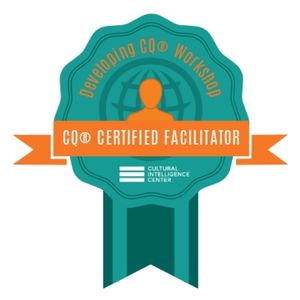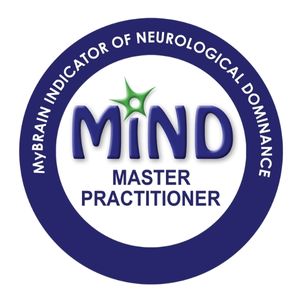I’m Victoria Rennoldson, Communication and Culture Coach.
Welcome to Wednesday Words – where I bring you communication and cultural strategies and skills for you to learn.
You can choose to watch this by clicking ‘play’ on the video above, which also has subtitles.
Or, because I know that many of you like to listen to podcasts, you can listen to the audio only version, by clicking below:
Finally, you can also read the blog as well, right here below.
Today, I am going to guide you through how to plan and write your presentation, using these six key success factors.
I’m sure you have all been there: sitting in a presentation which has already been going on for 40 minutes, and the speaker appears to be on only slide 25 of what looks to be a very long presentation deck. You’re not really engaged with the topic and have perhaps started planning your lunch! Perhaps you are also thinking about your to-do list, and even trying to get a few of these jobs done secretly, in the background. It’s not an ideal situation and yet, when it comes to writing and planning our own presentations, it can be challenging. This is because we often equate writing and planning a presentation with opening up PowerPoint or Google Slides and just getting started by creating a new deck.
So my first piece of advice is this – stop, pause and step away from the PowerPoint and Google Slides deck now!
This is really not the best way to start working on your presentation. In fact, there are many useful steps that we can take when thinking about how we’re going to make the most impactful presentation – one that people are really going to connect with.
Here, then, are my six key success factors:
Key success factor #1: What is the purpose of your presentation?
It’s a simple question, but one worth asking yourself: are you really clear about what it is you’re trying to achieve? If you were to summarise your key objectives, what would they be? Sometimes we lose our way or forget what our objective really is. For example, is your presentation purely about information-sharing? Or is it about engagement? Is it about providing an update and then getting contributions from the rest of the team? You need to get really clear about what your key objectives are.
Key success factor #2: What is your relationship with the audience?
Here, I use the word ‘audience’ in the broadest sense; you might be presenting to a small group internally or to a very large group that you’ve never met before. But it can be useful to think about that relationship in advance of your presentation.
If you are presenting to people you already know well, then you can anticipate a number of things: their agenda; what they might already think about this particular topic; what kind of questions they are likely to raise; what kind of issues might come up. And you can prepare for all of that, to make sure that you have all the answers to hand.
However, if you’re going to be presenting to a group you’ve never met before, then you may need to do some research. Whoever has invited you to do this presentation can probably give you some insights regarding the kinds of questions they might have or what they might be most interested in. It’s worth taking that extra time to get to know them in advance, to make sure you’re delivering the type of presentation that’s going to really engage them.
Key success factor #3: Start with the end, not the beginning!
I know this may seem counterintuitive – we often want to start from the beginning and build up our presentation from there. I like to encourage people, however, to think about the end first. Think about what your last slide might be and the key message that you want to communicate. What would that look like, if it were just ten words on a slide, for example? Try to get an idea of what that key message is, that memorable idea that you want to leave people with. Because once you have that, it becomes much easier to build up your story from there.
Key success factor #4: What is your story?
Now you know what the endpoint is, you need to find a way to flesh out your presentation from the beginning. Of course, you could go straight to creating your PowerPoint or Google Slides deck. There is, however, another very effective technique I use that you might want to try: taking some stick-it notes and writing down the most important ideas that you want to share.
It’s a great idea to get all your ideas down before you work out how you want to organise them. You might want to group some together into one slide, for example, or break down the more complex ideas into several slides. So I would recommend doing this as a planning activity. Try writing one idea per stick-it note and then laying them out, either on a table or up on a wall, and then ask yourself: have I got all my key points here?
This also allows you to think about the order of the story – how are you going to tell it?
Then I spend time moving the stick-it notes around to make sure the story really flows. This helps me to work out what the key sections are, and then to identify what the key slides are to help me move towards the final message and the end.
Key success factor #5: How will you open and close?
Now you’ve got your story and written the main body of your presentation, you will need to think about the impact you want to have at the start and at the end. These are two key opportunities to capture the attention of the audience, and they are also potentially the most memorable moments. Now, you could open with a welcome and some logistics, and then introduce the topic and get straight in. Equally, at the end, you could offer a very simple summary of what you’ve covered, thanking people and perhaps inviting questions. And these techniques do work, so please use them if they work for you.
However, here are a few more ideas about how we can open and close with a little more impact or ‘pizzazz’:
- Use a quotation from a famous person, or from somebody with something relevant to say on your presentation topic. You could use this both at the beginning and the end to engage people more.
- Use a shocking fact or statistic to grab their attention, both at the beginning and the end of the presentation.
- Ask a question, not for your audience to answer but more as a way to get them thinking, rather than just sitting and listening. For example: ‘What would you do if…?’ or ‘Imagine …’ Most commonly people ask questions at the beginning of their presentation, but it can also be a great way to close and then lead people into a discussion or next steps.
Key success factor #6: Keep it simple!
I have said this many times in Wednesday Words, on different topics around communication, but it really is a key point, particularly with presentations. You want to have people’s full attention for the limited time that you have, and you also don’t want to overwhelm them with too many words or too many ideas – on the slides or in what you’re saying. Much better is to have fewer slides, fewer words, and more pictures and images. They do say: ‘a picture says a thousand words’, and I think that is very true when it comes to presentations. If you use fewer words, your audience can actually remember the one, two or three key points that you’re trying to say. If you have lots of information you need to share, it is much better to send this as an appendix, either in advance or after the presentation.
Quick summary:
So today you have learnt six key success factors for writing and planning your presentations:
- What is the purpose of your presentation?
- What is your relationship with the audience?
- Start with the end, not the beginning.
- What is your story?
- How will you open and close?
- Keep it simple.
I hope it’s been useful for you to consider a few different ways you can write and plan your presentations. I appreciate it’s sometimes quicker to just open up those PowerPoints or Google Slides and get stuck in that way. If you are looking for your presentation to have more impact and engagement, however, and you want your audience to remember the key points you’re making, then I encourage you to try out some of these techniques.
Activate & learn
- Choose one, two or three of the techniques I shared today and try them out when planning and writing your next presentation.
- Ask somebody you trust in the audience for their feedback afterwards. Ask them if they noticed anything different in the way that you did your presentation.
- Take a moment for self-reflection after. Ask yourself what worked well, and what you might do differently next time. When you are trying out something new, it’s really important to experiment and to also capture the learning.
Thank you so much for joining me today for Wednesday Words, where we talked about the key success factors for planning and writing presentations. If you’re not currently subscribed then please do make sure you sign up, so that you can receive these posts every single week, direct to your inbox!
I’m Victoria Rennoldson, Communication and Culture Coach, and I look forward to seeing you next week for more Wednesday Words.




